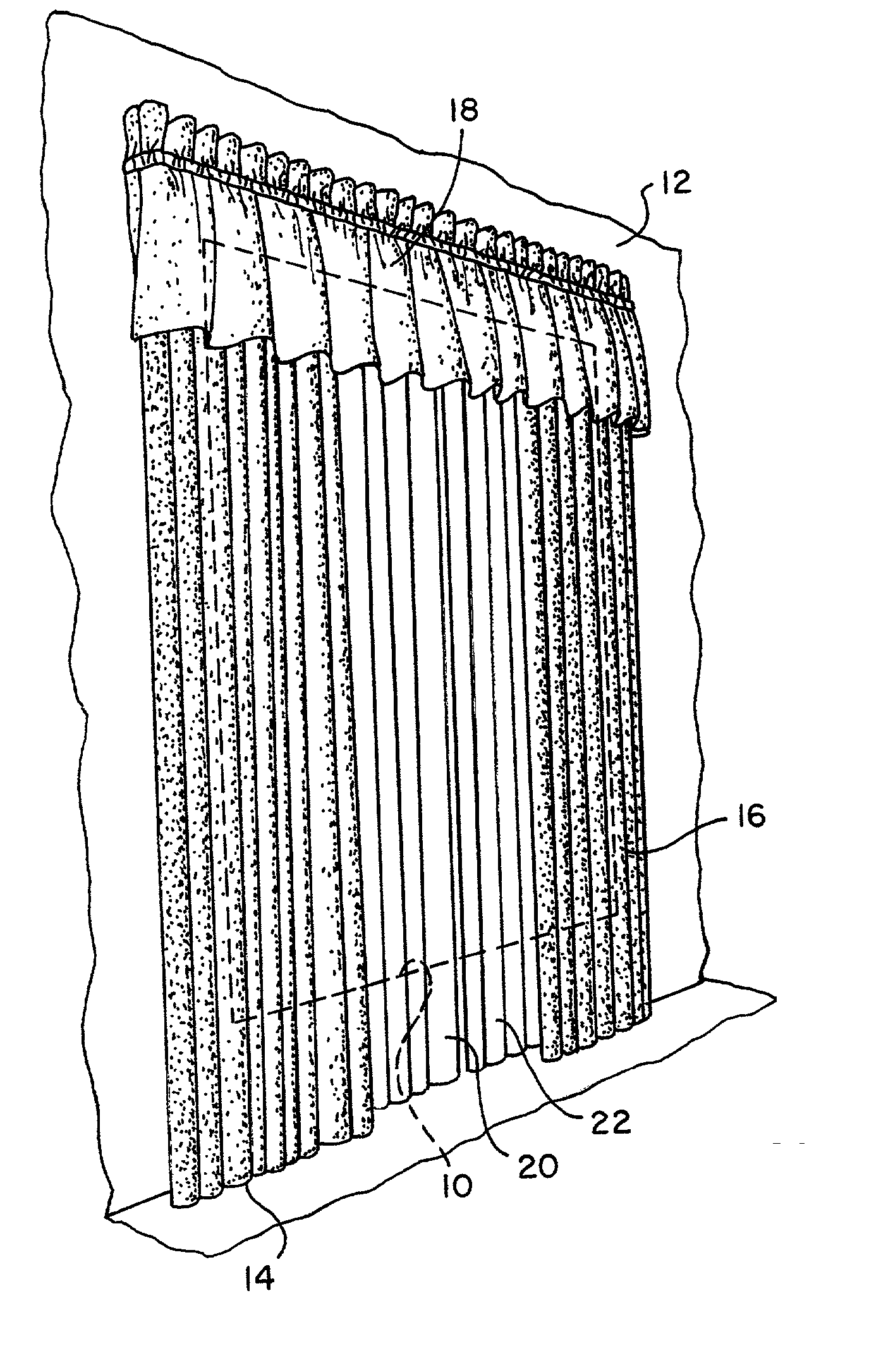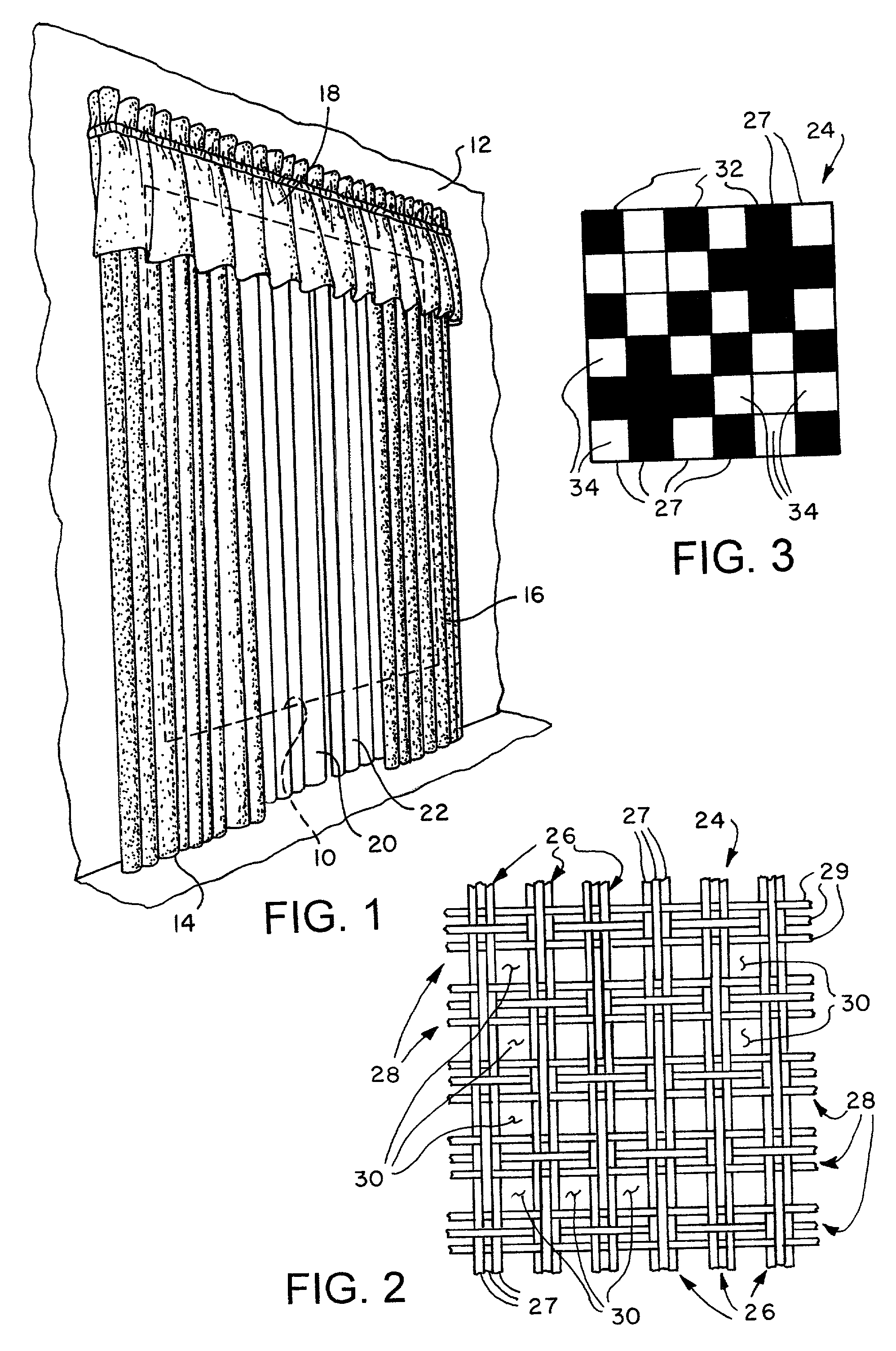Casement fabrics
a technology of fabric and fabric layer, applied in the field of casement fabrics, can solve the problems of unsuitable fabrics used for known types of sheers, inability to prevent damage from ultraviolet radiation or light to the sheers themselves, and the damage of ultraviolet radiation, so as to reduce the amount of ultraviolet light (radiation) and minimize damage from such radiation
- Summary
- Abstract
- Description
- Claims
- Application Information
AI Technical Summary
Benefits of technology
Problems solved by technology
Method used
Image
Examples
Embodiment Construction
[0012]In the description which follows like elements are marked throughout the specification and drawing with the same reference numerals, respectively. The drawing figures may not be to scale and certain elements may be shown in schematic or generalized form in the interest of clarity and conciseness.
[0013]Referring to FIG. 1, there is illustrated a typical application of the casement fabric of the present invention as a window covering for a window 10 disposed in an exterior wall 12 of a building or residential dwelling. The window 10 is decorated by a conventional set of opaque window coverings such as drapery panels 14 and 16 which are hung in a conventional manner together with a valance 18. The window 10 is also covered by light admitting window coverings or sheers comprising one or more panels 20 and 22 which are also hung in a conventional manner between the window 10 and the opaque window coverings 14, 16, 18. The panels 20 and 22 are formed of an improved window covering f...
PUM
| Property | Measurement | Unit |
|---|---|---|
| weight | aaaaa | aaaaa |
| density | aaaaa | aaaaa |
| weight | aaaaa | aaaaa |
Abstract
Description
Claims
Application Information
 Login to View More
Login to View More - R&D
- Intellectual Property
- Life Sciences
- Materials
- Tech Scout
- Unparalleled Data Quality
- Higher Quality Content
- 60% Fewer Hallucinations
Browse by: Latest US Patents, China's latest patents, Technical Efficacy Thesaurus, Application Domain, Technology Topic, Popular Technical Reports.
© 2025 PatSnap. All rights reserved.Legal|Privacy policy|Modern Slavery Act Transparency Statement|Sitemap|About US| Contact US: help@patsnap.com


